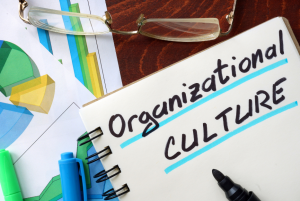Can Organizational Culture Sabotage Your Business Strategy?
 Does culture really eat your business strategy for breakfast just as Peter Drucker said? Does culture even have the power to swallow up your strategic plan as its own meal?
Does culture really eat your business strategy for breakfast just as Peter Drucker said? Does culture even have the power to swallow up your strategic plan as its own meal?
Peter Drucker was actually directing our attention to the importance of aligning a well-defined people and process strategy to the business strategy. Organizational culture encompasses people, processes, values and behaviors that contribute to a workplace’s sociological and psychological environment.
Since culture is a complex concept, how then can we intentionally align it to business strategy? First of all, many functions in an organization contribute to the success of such an alignment. For example, I once worked in a large organization where I saw the impact of their learning and development (L&D) function on their organizational culture.
One of the first things I noticed in this organization was the passion and commitment of the employees to the organization. As I worked closely with individuals and teams, I observed how they related to each other with courtesy and respect, collaborating with one another other as if they were incapable of doing otherwise! This made me curious to know how they managed their differences without disrupting work. How come a large group of diverse individuals with varying backgrounds are so engaged and unified in keeping the organization’s strategic engine moving direction of established goals? …I wondered
Below are some of the valuable insights I gleaned when I later worked with their L&D team:
- Their organization’s learning strategy was directly aligned to their vision, mission and goals – they ensured learning made business sense and senior executives openly supported learning programs.
- Annual training needs assessment identified mission-critical performance enhancement needs at the organizational occupational group and individual levels.
- Core values were defined, described and used for a customized employee-core values training.
- The organization’s competency model (aligned to core values) included behavioral, leadership and functional competencies for all levels of employees.
- Behavioral and leadership competencies formed the backbone of their: Performance management process, leadership development programs at all levels and the hiring process.. Applicants were screened and hired based on demonstrated technical and behavioral competencies.
- The merit and nomination-based employee recognition program was aligned to their core values Employees were always proud to bring their family members to the bi-annual awards ceremony.
- Impact of learning and development activities were monitored, measured and reported to executives.
It all made logical sense! The culture here was defined and L&D programs were intentionally aligned to the business strategy. Their enabling culture made it easier to engage their employees in more meaningful ways. It is noteworthy that although salaries paid to the employees were not really competitive compared to market rates, employee turnover was very low.
A flip side to this organization’s environment would be an inability to connect training activities to business needs, disengaged employees who do not feel recognized, employees who do not know or understand the relevance of organizational goals or core values to their work, values or behaviors, employees who harass or disrespect each other, supervisors and employees who are not aware of the competencies needed to achieve high performance.
I gained these insights very early in my career as a human resource professional. In fact, they shaped my belief in the ability of L&D programs (including onboarding, leadership development, on-the-job, or off-the-job learning) to positively impact performance and the workplace environment. It even shaped my career choice to specialize in talent acquisition and development after several years’ experience in all facets of HR. I continue to actively encourage my clients to assess the connection of their business strategy to the “people” side of business, as I partner with them to ensure that their organizational culture supports their mission and it will not eat their business strategies for breakfast…and lunch.
By: Adewunmi (Ade) Lewis, Vice President
![]()


